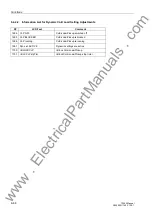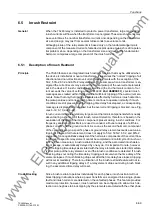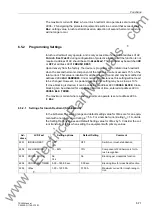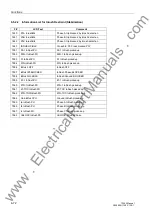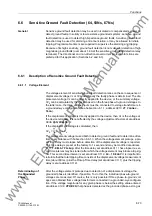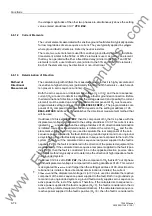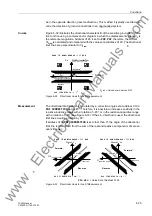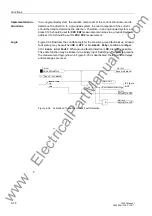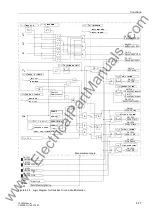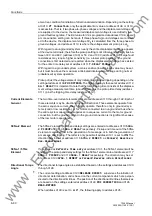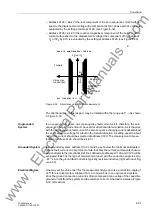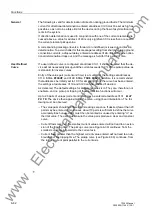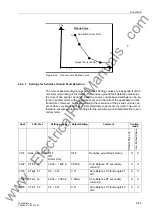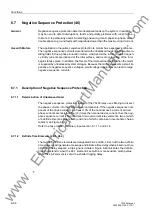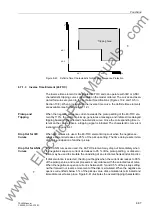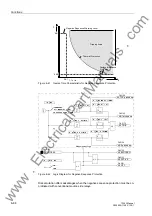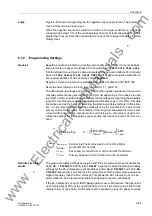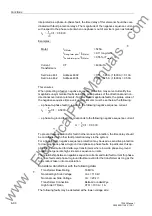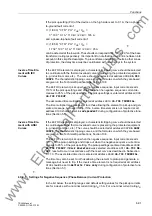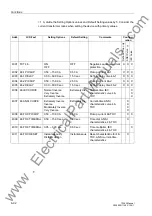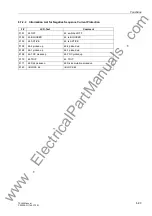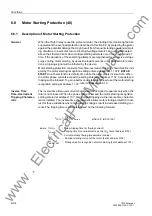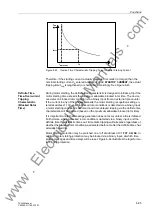
Functions
6-80
7SJ63 Manual
C53000-G1140-C120-1
ement is a condition for initiation of directional determination. Depending on the setting
at
97&RQQHFWLRQ
, only the applicable limit value at address
or
is accessible. That is, if two phase-to-phase voltages and the displacement voltage V
0
are supplied to the device, the measured displacement voltage is used directly for
ground fault recognition. The limit value for V
0
is programmed at address
, where
a more sensitive setting can be made. If three phase-to-ground voltages are connect-
ed to the device, the displacement voltage 3V
0
is calculated from the three phase-to-
ground voltages, and address
is where the voltage element pickup is set.
With regard to an ungrounded system, nearly the entire displacement voltage appears
at the device terminals, therefore the pickup setting is not critical, and typically lies be-
tween 30 V and 60 V (address
) or 50 V and 100 V (address
). Large fault
resistances may require higher sensitivity (i.e. a lower pickup setting). The ground
connection is first detected and reported when the displacement voltage has existed
for the entire time delay set at address
7'(/$<3LFNXS
.
With regard to a grounded system, a more sensitive (lower) pickup value may be set,
but it must be above the maximum anticipated displacement voltage during normal
(unbalanced) system operation.
Pickup of just the voltage element may initiate time delayed tripping depending on the
setting at address
38&5,7(5,$
. The tripping delay is then set at address
'(/$<
. It is important to note that the total tripping time consists of the displace-
ment voltage measurement time (about 50 ms) plus the pickup time delay (address
) plus the tripping time delay (address
).
Current Elements,
General
The two time-overcurrent elements are set at addresses
through
. Each of
these elements may be directional or non-directional. These elements operate from
the zero sequence current. They typically operate, therefore, only in grounded sys-
tems (solid or low resistance), or for motors connected to an ungrounded bus where
the entire system capacitance supplies zero sequence current to the motor ground
connection, but the ground current in the ground connection is insignificant because
of the low motor capacitance.
50Ns–2 Element
The 50Ns-2 element pickup and delay settings are entered at addresses
1V
3,&.83
and
1V'(/$<
respectively. Pickup and time out of the 50Ns-
2 element can result just in the generation of a message, or in both the generation of
a message and tripping. The latter is only possible if address
is set to
ON
. The
direction may be set at address
1V',5(&7
as
)RUZDUG
5HYHUVH
or
1RQ'LUHFWLRQDO
.
50Ns-1 / 51Ns
Element
If configured as
'HILQLWH7LPHRQO\
at address
, the 50Ns-1 element will be
enabled. The pickup and delay settings for the 50Ns-1 element are at addresses
1V3,&.83
and
1V'(/$<
respectively. The direction may be set
at address
1V',5(&7
as
)RUZDUG
,
5HYHUVH
or
1RQ'LUHFWLRQDO
.
Directional Torque
Angle
The directional torque angle are established based on the settings at addresses
through
.
The current setting at address
5(/($6(',5(&7
supervises the initiation of
directional determination, and is based on the current components which are perpen-
dicular to the directional limit lines. The position of the directional limit lines themselves
are based on the settings entered at address
3+,&255(&7,21
and
0($60(7+2'
.
When address
is set to
, the following apply to address
:
www
. ElectricalPartManuals
. com



